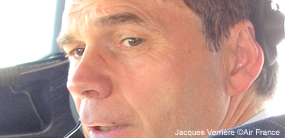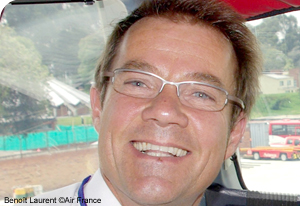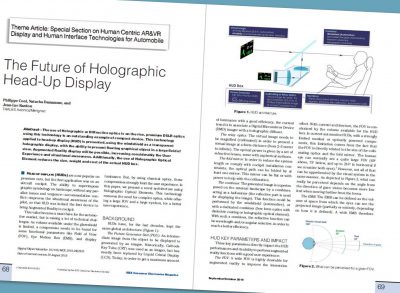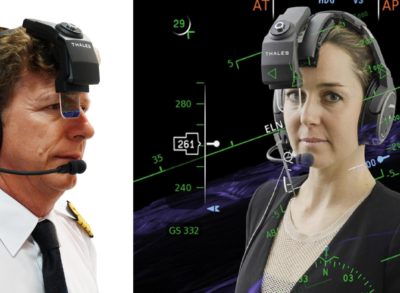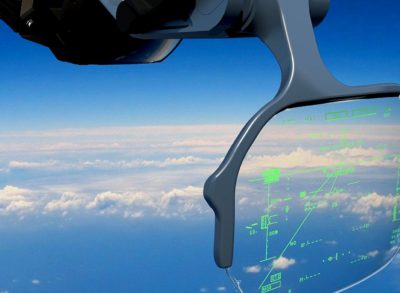A pilot’s perspective on the Thales HUD
Onboard speaks to two pilots with considerable experience using Thales’s HUD (Head-up display). Jacques Verrière, Director of Technical Development at Air France, and Benoît Laurent, Head Pilot of Air France’s A380 Division, were both involved in testing the HUD back in February 2008, and have since used it regularly onboard the A380.
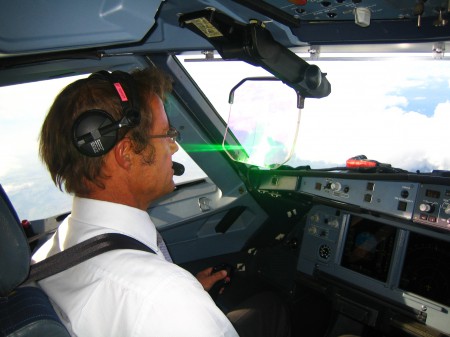
Jacques Verrière: On the A380, Air France chose to equip both pilot positions with the HUD for one main reason: safety. The system helps increase pilots’ situational awareness during approach, landing and taxiing – and that offers a real boost to safety.
Benoît Laurent: Having velocity vector data superimposed onto our external view is extremely useful. It means we know exactly where the aircraft is going and we can judge speed with extreme precision.
How does the HUD help you during the approach phase?
JV: For more challenging landings, the HUD is a real help. It offers us a transition between system instruments and the outside world – which is invaluable when undertaking complex manoeuvres at low altitude, such as the “ VOR 22 left or VOR 13 Canarsie approach” at JFK airport.
What advantages does the HUD offer in adverse weather conditions?
JV: When flying in fog, pilots usually divide up the workload: the co-pilot will survey aircraft instruments, while the captain focuses on identifying visual references outside the plane. The advantage of the HUD is that the captain can now keep a firm eye on critical flight data while also monitoring the external view. And that’s a real plus.
BL: Another advantage is that it’s easier for us to anticipate wind shear. Sometimes, classic aircraft instruments don’t detect mild wind shear, which can make landings more difficult. With the HUD, this is no longer a problem.
How does Air France train pilots to use the Thales HUD?
BL: At the beginning of pilot training, there is now a specific HUD training session in our flight simulator, and HUD is used during all simulator sessions. Generally, pilots adopt the system quite quickly.
JV: It’s also worth mentioning that use of the HUD is mandatory for Air France pilots during all flight phases except cruising. We insist the HUD is used for take-off, landing and taxiing.
How do you foresee the future of HUD?
BL: The HUD is a tool that will evolve in the future, offering more and more safety features. In fact, we’re already looking forward to a version that includes EVS (Enhanced Vision System). Given these developments, I am absolutely convinced that, in 15 or 20 years, it will be impossible to conceive of a commercial aircraft without a HUD.
Like to know more? Contact Michel Soler
- Photos credit: Jacques Verrière ©Air France, Benoît Laurent ©Air France


